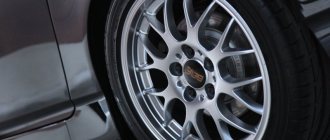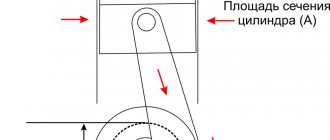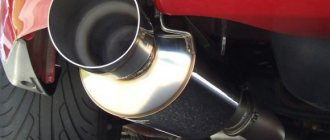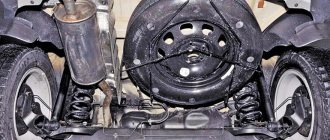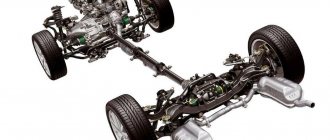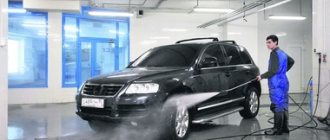- Nanocoating for cars - what is it?
- Application of nanoceramics
- Nanoceramics for cars - pros and cons
- Nano coating - service life
- Car nanoprotection - care features
The body and glass are more susceptible to various external influences than other elements of the car.
UV radiation, stones, road reagents, dust, moisture, dirt contribute to their rapid wear and loss of appearance. Therefore, there is a need for additional protection of the car body and glass. Today, there are a huge number of different means and methods that make it possible to protect the external elements of a car from various negative influence factors. And one of the most modern and progressive approaches is the use of a special nanocoating (nanoceramics) for the car body and glass. Let's figure out what it is.
What is nanocoating (nanoceramics)?
The technology of coating the body with nanoceramics appeared back in the 80s. The main difference between the materials used for this procedure is the particle size of the protective composition itself - they do not exceed 100 nm. Moreover, the thickness of the coating itself is hundreds of times greater than when using wax.
The composition of the ceramic coating largely depends on the manufacturer, but, as a rule, it includes the following components:
- SiO2. The main component of nanocoating, which ensures high hydrophobicity of the material.
- SiC. Used in the composition to strengthen the finished nanocoating.
- TiO2. Determines the hardness of the material and provides protection of the treated surface from exposure to UV radiation.
It is worth noting that the main component of nanoceramics is SiO2 and its share in high-quality compositions should be at least 50%.
REMOVES BITUMEN STAINS, TAR AND TRACES OF OIL
Sonax bitumen cleaner gently and effectively removes bitumen stains, traces of tar and oil, as well as other stubborn dirt. The special components included in this product are able to penetrate into the deepest layers of dried dirt in a matter of seconds, softening and breaking them down. The product is also ideal for removing sticker residues and marks from bodywork with anti-corrosion agents.
Have you always gone to a car wash to remove tar stains in the past? Save your time and money, because now you can easily handle this task yourself with the help of Sonax bitumen cleaner!
How is nanocoating applied?
When working with nanoceramics, it is important to adhere to the recommendations provided by the manufacturers. After all, the mixtures on the market are quite different in terms of composition and features of their use.
In general terms, the technology for applying the material is as follows:
- The surface is thoroughly washed and cleared of all contaminants.
- The surface is treated with degreasing compounds that do not have a negative effect on paintwork and glass.
- Surface polishing and removal of various defects to obtain a smooth, glossy surface.
- Applying nanoceramic paste to the surface of the body or glass (application is carried out in 3-10 layers depending on the type of composition).
- Drying (takes about 5-8 hours).
The procedure for applying nanocoating itself requires not only experience, but appropriate equipment, so it is better to trust it to professionals.
Unobvious habits that spoil the car body
There are also driver habits that simply damage the paint and cause corrosion or simply deteriorate the car’s attractiveness. For example, many car owners park their car in such a way that it becomes difficult to get out of it, because there is another car nearby. And if you don’t destroy your car, then the driver of another car may inadvertently touch the side of your car while opening the door.
Some of these bad habits include:
- wiping dust or dirt with a dry cloth from the body, for example, in the area of the handles, this will lead to deep scratches and abrasion of the top protective layer of paint;
- parking under trees - linden and poplar have become the main enemies of car paint from the plant world, not to mention bird droppings that corrode paintwork;
- repairs from untested mechanics - the craftsmen are not always careful with cars, they do not always have special covers for the fenders so as not to spoil the paint on the car;
- polishing to a shine after every second wash - this will lead to the fact that the car will simply lose its pleasant visual properties after just a few months;
- inaccurate loading of bags and sacks into the trunk - the problem is due to the fact that heavy and hard objects easily leave chips on the paint and destroy the protective layer;
- transporting heavy objects on the roof - a special trunk is intended only for small soft loads; any heavy objects will damage the paintwork on the roof and generally cause problems.
Also, many drivers get in and out of the car incorrectly. It is important that you do not touch the thresholds with your feet. If this happens, your clothes will always be dirty. Also, the paint in the contact area will wear off within a few months, exposing the metal. This will cause corrosion and cause serious problems with the car in the future. Minimal contact with the body is the main rule that will allow you to keep your car in normal visual condition.
Advantages and disadvantages of nanocoating
The advantages of using nanocoating include:
- High protective performance. Compared to other body coatings, nanoceramics are characterized by versatility and high reliability. Thus, it is able to protect the surface of the body and glass from chips, scratches, various chemical influences, UV radiation, etc.
- Decorative effect. In addition to protection, the ceramic coating provides the effect of a smooth, glossy surface for a fairly long time. This is almost impossible to achieve with ordinary polishing.
- Easier care. The ceramic coating is characterized by its ability to repel dirt, so even in bad weather you can go without washing for several weeks.
Of course, nanoceramics also has its drawbacks. These include:
- High price. On average, the cost of body treatment is 25-60 thousand rubles, depending on the selected composition and body type. This is a fairly impressive amount, not available to every driver.
- A large number of low-quality materials. Due to the high popularity of nanocoatings, the market is flooded with scammers who sell low-quality compounds that do not meet the stated characteristics.
- Difficult to apply. Working with nanoceramics requires certain skills and technical means, so it will not be possible to apply it in a garage.
Despite all its shortcomings, nanoceramics remains one of the most technologically advanced types of glass and body processing.
Detailing.NEWS
Difficult road conditions in our country do not contribute to the safety of the car. What suffers the most is the body, which takes on all the oncoming blows. And it also costs the most if we neglect the paintwork and do not remove the rust in time, which tends to penetrate into the slightest scratch. Therefore, the first thing a responsible car owner does today when buying a new car is to coat it with all sorts of polymer compounds and other potions. This is correct, since prevention is easier than wasting money and time on annoying repairs. However, the market for “potions” has grown so much today that it is becoming increasingly difficult to understand them. Do we need how? Effective, simple and cheap. It's real? Yes. If you spend a little time making a competent choice. The easiest way to get effective protection is to take your car to a reliable service center, where a professional technician will give his professional recommendation regarding the product, and apply it to your car in an extremely professional manner. But we understand that reality often diverges from the optimal solution. Sometimes protection is needed here and now, because there is a difficult road ahead, but for one reason or another there is no opportunity to get into the service. There is also an amateur enthusiasm when you want to try your hand at detailing, and here paint protection seems to be an attractive place to start.
In this article, we will analyze the available means, identifying the advantages and objective disadvantages, so that everyone can make a choice based on their realities and preferences. We will also try to orient the reader by price, although it is very difficult to predict the exact cost in this matter: too wide product lines are presented today in each category. But it is quite possible to get a general idea at the “expensive/cheap” level.
So, what does the modern car cosmetics market offer the caring car owner?
Waxes
Waxes are the most conservative way to protect paintwork, dating back to a time when there was no car itself, but there were carriages and stagecoaches that also needed to be protected from dirt and tar. The principle of operation is that the liquid mass of wax fills microcracks and scratches, and then hardens, masking them to the eye with a shiny film and protecting them from the onset of corrosion processes. Modern waxes, in comparison with their analogues of the past, have noticeably increased their effectiveness, but still remain rather a temporary solution, since they are quickly erased from the surface due to friction and washing. But they are easy to use, require minimal surface preparation and are almost incapable of harming your car.
Ease of application: simple technology Application speed: fast Efficiency: low to medium Durability: low Aesthetic effect: high during the period of action Cost: from 2000 rubles
Protective polishes
As the name suggests, protective polishes involve pre-polishing the paintwork. Typically, such compositions are used as a finishing coating in combination with abrasive polishes. The car is pre-polished by hand or by machine with a special paste. The smallest hard particles of abrasive polish remove the top layer of paintwork, leveling the surface. Thus, scratches and other abrasions in this case are not masked, as is the case with wax, but are eliminated. After which a finishing polish is applied, giving the surface a characteristic deep shine and providing subsequent protection. As follows from the description of the technology, this work requires certain technical equipment and skills, so the car usually receives it at a service center. But the result is worth it; the duration of protection can reach up to 36 months.
Polishing compounds presented on the car cosmetics market vary greatly in their quality and price, so it is very difficult to give exact limits on the possibilities here. Rather, we can say that in this niche any car enthusiast will find something to suit his needs and his wallet.
Ease of application: multi-stage technology using a polishing tool Application speed: slow, with a wait between stages Efficiency: from low to high Durability: from low to high Aesthetic effect: from medium to high Cost: from 3000 rubles
Liquid glass
Liquid glass or nanoceramics is a relatively new method of protecting paintwork, developed on the basis of nanotechnology. Its essence lies in applying a very thin film to the surface, the layers of which are bonded by nanoparticles, providing high plasticity. This coating has all the advantages of glass, while maintaining the ability to stretch. The car seems to be in a durable shell, which, however, does not crack under the influence of mechanical friction and temperature changes, which provides almost perfect protection. If we add to this the pronounced “wet” shine, which persists throughout the entire period of operation, the avalanche-like popularity of nanofilms becomes understandable.
The disadvantages of this solution, perhaps, include the relatively high cost. In addition, the compositions are quite capricious to apply (compared to waxes) and require a certain level of qualification from the master. If some kind of protection was previously applied to the body, the car will have to be polished to remove its traces, even if there are no visible scratches or abrasions.
Ease of application: average Application speed: slow, with waiting between stages Efficiency: high to very high Durability: medium to high Aesthetic effect: very high Cost: from 5,000 rubles
Liquid case
The name is similar to the previous one, but this composition is a completely independent formula. The essence of protection in this case is to create a rough film on the surface of the paintwork, which is designed to protect your car here and now. The liquid cover has low aesthetic qualities, it is short-lived and is not at all about how to detail your car. But it is indispensable if you suddenly need to urgently go out of town on a bad road and there is no time/desire/money to purchase long-term protection for the body. You can easily apply the cover yourself in the shortest possible time, and then just as easily get rid of it.
Ease of application: very simple technology that does not require skills or equipment Application speed: very fast Efficiency: high Durability: low Aesthetic effect: low Cost: from 600 rubles
Protective film
And this product, in turn, has nothing to do with the liquid cover. Screen protectors are films in the literal sense of the word. They come in vinyl or anti-gravel. As the name suggests, such films are designed to protect your car’s paintwork from at least the effects of flying gravel. In fact, a good film can even prevent damage from minor accidents, such as being hit by the bumper of someone else's car in a parking lot. The film is attached to the surface with a special solution, which requires certain skill and experience. You can treat the entire car in this way or only the parts that are most susceptible to mechanical stress. This protection lasts for years, but also costs accordingly. Films also have a very large aesthetic reserve, since they can be used to apply designs to cars, create matte or, on the contrary, glossy surfaces, and a mirror effect.
Ease of application: requires professional skill Application speed: average Efficiency: very high Durability: very high Aesthetic effect: high Cost: from 5,000 rubles
Fabric cover
Cloth is a simple, crude, but very effective way to protect your car's exterior. As the name implies, in this case the car is simply dressed in a fabric “overall”, which is not pierced by stones, dirt, sap from trees, or other surprises. Such radical protection is usually necessary if the car has to be parked in a potentially dangerous place or left for long-term storage in a garage. The cover should be selected not only based on the technical properties of the fabric, but also individually for a specific car. It is important to prevent debris from getting inside, which could damage the paintwork. For the same reason, the cover should be periodically carefully cleaned from the inside during use.
Ease of application: simple application Efficiency: very high Durability: depends on operating conditions and quality of production Aesthetic effect: average Cost: from 2000 rubles
Deflector
The deflector is a plastic attachment on the hood and/or windows of a car. The principle of operation of such protection is to change the aerodynamic properties of the car. The deflector changes air flow, causing small, potentially dangerous debris to change trajectory without coming into contact with the surface of the car. It is important to accurately fit the deflector plate and fasten it correctly, securely, otherwise a piece of plastic that comes off on the road can cause an accident. An important point is that the deflector begins to work only at high speeds from 70 km/h, so it is advisable to use it only on highways. Aesthetically, the nozzle can be very attractive; sometimes deflectors are installed specifically for aesthetic purposes.
Ease of application: average Efficiency: high Durability: depends on operating conditions and production quality Aesthetic effect: high Cost: from 500 rubles
Liquid rubber
Officially, liquid rubber is a rubber-based paint that allows you to instantly dip your car in a matte color and just as quickly take it out. However, in terms of its qualities, liquid rubber is quite suitable for the title of a protective composition, since it is a thick “rubber” film that reliably protects the original paintwork of the car from meeting the harsh reality. What is doubly attractive is that to apply this paint you do not need to part with your car’s own paintwork; it generally remains intact. Rubber is applied from a can to the entire body or parts of it - the car, if desired, can be easily painted in all the colors of the rainbow, right down to the rims. And then rid her of this fancy dress by simply “pulling” it off the body.
Ease of application: simple application Efficiency: high Durability: depends on operating conditions Aesthetic effect: very high Cost: from 7,000 rubles for the entire car
Paint Raptor
But this is real serious paint, to apply which you will have to completely remove the original paintwork of your car. This paint was included in the list of protective agents for its exceptional properties. In fact, in terms of resistance to mechanical or chemical stress, none of the products listed above in this article can compare with Raptor. The Raptor is exceptionally good if you do a lot of off-road driving, and it also has very high aesthetic properties. Matte shades are loved not only by owners of rugged SUVs, but also by owners of “glamorous” city cars. In general, Raptor is fashionable, stylish and effective. And also expensive. Of course, such a bouquet of qualities could not but entail a high cost. In addition, if you don’t like the matte car, you will have to restore the paintwork from scratch, which will negatively affect the cost of the car.
Ease of application: complex technology for professional use Efficiency: very high Durability: very high Aesthetic effect: very high Cost: very high Finally, I would like to note that with any choice of protection, the best way to protect your car is your careful and attentive driving. Value your car, your health and the health of other road users and may good luck accompany you on your journey!
How long does a nanoceramic coating last?
The durability of ceramic protection directly depends on compliance with all rules for working with the material, as well as the selection of a high-quality composition. On average, its shelf life is 12-24 months.
It is important to note that the durability of the protection is also determined by the intensity of use of the vehicle. With daily driving on average 2-5 hours a day, the coating will require restoration within 12-15 months. At the same time, re-processing will be much cheaper, because specialists will only need to “build up” the protective layer.
Let's sum it up
A modern car must remain beautiful, otherwise it becomes unpleasant to drive. Problems with paintwork begin with barely noticeable scratches and other troubles and end with through corrosion. In one car, the interval from the first to the second state takes a couple of years, and in another - only a few months. Therefore, you need to take good care of the paintwork, so that you don’t have to pay a lot of money to restore the body.
Don’t forget that a car with original paint will cost much more on the secondary market. If it looks decent at the same time, the potential buyer will not even bargain. A small investment in preserving the paintwork can lead to a significant increase in the price tag when selling the car. Choose for yourself those methods that are acceptable in cost and quality. But be sure to do everything possible to prevent paint damage on body parts.
Features of care
After applying protection to the car body or glass, it is recommended to refrain from visiting the car wash for 2-3 weeks. After all, during this period the coating gains strength and is fixed on the surface.
In the future, you should adhere to the following recommendations:
- To clean your car, it is better to use a contactless car wash.
- Use of rags, brushes, etc. It's better to keep it to a minimum.
In general, this type of processing is not so demanding in terms of maintenance.
How else can you protect the car body?
There are other methods by which you can ensure proper paint protection on your car. For example, you can use indoor parking or purchase a garage. This will have a good effect on the overall condition of your car and, in general, will allow you to preserve the paintwork much better than when storing your car on the street. A popular method of preventing problems with paint is armoring with special films. This method is effective, but it has several nuances.
Reservations will not work under the following conditions:
- the film chosen is too cheap - in this case, the reservation will not be effective, the film will quickly peel off or tear, which will cause problems with the body;
- the gluing went wrong - for example, the contractor did not follow the manufacturer’s instructions, which led to the film quickly peeling off from the reservation site;
- the body has not been washed and dried - only special protective coatings can be applied to a dry and clean surface, otherwise they simply will not stick;
- the film has been damaged - in this case it should be replaced as quickly as possible so as not to expose the body elements to additional danger, otherwise damage is inevitable;
- you bought defective products - if the film begins to peel off or darken, replace it, since such armor will not have any effect, only problems are possible.
Reservations only make sense in partial form. For example, you can cover parts of the arches and sills with a special film. This will reduce the potential for problems with rust and chips, and will also extend the life of the most problematic areas of your car's paintwork. If we are talking about armoring large body parts or the entire paintwork of a car, the cost of such a procedure is approximately equal to painting the car, so there is no point in it.
We invite you to watch a video with recommendations for preserving paintwork:
How to protect the hood from chips and stones
Even if you properly monitor the condition of your car, after a while the appearance of your car deteriorates slightly due to chips, scratches and dents on the hood. The cause of such damage is the impact of stones flying out from under the wheels of a car moving in front of you. Even minor damage to the coating can lead to serious consequences: corrosion develops very quickly and can cause a lot of harm.
How to apply anti-gravel film
You can install the anti-gravel film yourself. If you are not sure of the quality of the result, we recommend contacting a service center for professional service.
If you decide to stick the film yourself, here’s what you’ll need to apply it:
Important: for convenience, we recommend performing all actions after wetting your hands.
- The part to which the film will be applied must be checked for chips, thoroughly washed and degreased. Apply a soap solution to the surface using a spray bottle.
- Peel the film off the base and cover it generously with soapy water. This is necessary in order to get rid of static electricity.
- Carefully glue the film onto the part. Using a spatula, remove the soap solution. If dust has managed to get under the film or air bubbles remain, peel off part of the film and rinse it with distilled water.
If all actions are carried out carefully, you will be able to reliably protect your car, and it will delight you with its original appearance for a long time, and the hood will be free of chips and dents.
Anti-gravel car protection film
We provide anti-gravel protection for cars with transparent films: vinyl or polyurethane. We armor the body, windows and headlights with film.
Maximum protection of the car from gravel, sandblasting, winter reagents, cats and pigeons. Perfect shine, self-healing layer and hydrophobic effect - repels water. Multi-layered and thicker than vinyl film. Serves from 5 to 10 years. Film Stek, Suntek, Hexis and llumar. Promotion in DECEMBER!
Protecting your car with anti-gravel vinyl film. Allows you to protect the body, headlights and mirrors from gravel, small chips and scratches. Serves for about 4 years. Then you can replace it. Film Araguard 270, KPMF 8000 series.
There are two types of anti-gravel film - vinyl and polyurethane. It is divided into matte and glossy, tinted and transparent, smooth and textured. The quality of the film is determined by strength, elasticity (the amount of free plasticizers) and tensile strength.
- Vinyl
. Made from synthetics based on polyvinyl chloride. The thickness of the canvas is 50−150 microns. It's inexpensive. Serves from 2 to 5 years. It is divided into cast and calendered. The first option is preferable because it is more plastic and does not shrink during operation. High-quality car vinyl is produced by the brands Suntek, 3M, KPMF, Oracal. - Polyurethane
. It is made on the basis of thermoplastic polymers bonded with resins. It is divided into single-layer and double-layer. Thickness - 100−300 microns. It costs 2-3 times more than vinyl. Serves 5 − 10 years. A reinforced version is armor-piercing film (600 microns). Used to protect glass, mirrors and optics, as well as wrapping premium cars worth more than 3 million rubles. The best manufacturers are 3M, Suntek, KPMF, Hexis, Solarnex, SolarGard, Hogomaku, Clearshield.
Example of anti-gravel protection for Toyota Land Cruiser 200
Protecting the hood from chips: options, reviews, do it yourself
Hi all!
How unpleasant it is when, even with careful care, all sorts of chips, scratches and damage appear on the hood. It's a shame for those who put a lot of effort into protecting the body. Therefore, today’s material will be devoted to such a topic as protecting hoods from chips. The main cause of damage to the hood is in front of you when you drive your car. This is gravel, sand, and wind-blown debris flying away from cars moving in front of you. In some cases, a large chip appears immediately, in others, the debris acts as an abrasive, gradually erasing and damaging the factory paintwork.
Today I will talk about how and with what you can protect the hood. In fact, all this applies to protecting the body from chips and scratches. I also advise you to read this material further.
How to install a deflector on the hood
To avoid the deflector coming off while driving and disappearing in an unknown direction, it is necessary to firmly secure it to the hood of the car. However, do not overdo it - you can easily break the thread on the plastic mount of the “fly swatter”.
Several ways to attach the deflector:
- Using 3M tape. This method is very common when installing a deflector with your own hands. Objectively, the method is quite safe if all steps are performed correctly. When installing the deflector using 3M tape, it is advisable to evenly distribute the points where the deflector will be glued to the hood. The total number of such points is preferably at least 5.
5 points are required for good fixation of the deflector. Use of factory fastenings to the deflector. Each deflector comes with a set of plastic fasteners and detailed installation instructions. Just follow the instructions, installing the “fly swatter” will not raise any questions. The disadvantage of this method is possible damage to the hood paint.
Factory deflector mounts
- Use of "European fasteners". If your car was supplied with a deflector from the factory, then the hood already has fasteners for installation. This is probably the easiest way, because everything has already been invented before you.
Polyurethane film
If the feasibility of vinyl raises questions, then a thicker (on average 150 microns) polyurethane film looks much better against its background, but is also many times more expensive. The history of the appearance of this coating is interesting: it was originally created to protect the blades of American military helicopters from wear in desert conditions.
On cars, the coating shows its good side - it resembles rubber, is elastic, breaks with difficulty, protects the paintwork from pebbles and road sandblasting, is not noticeable on the car, because it is transparent, resistant to low temperatures, but transmits ultraviolet radiation, although it practically does not turn yellow or becomes cloudy. Military roots have had their effect - polyurethane films have sufficient protective properties and are still better suited to protect paintwork from chips and scratches than vinyl films, which are often an element of style.
Raptor paint job
Finally, one of the most severe ways to protect a car body, but not only from chips, but even from the zombie apocalypse. A two-component polyurethane coating was originally applied to truck bodies to protect them from damage. Later, the Raptor was used by pickup truck owners to protect the cargo compartment from chips and by jeepers who needed serious body protection during off-road forays. “Raptor” is quite capable of providing it, because it is very resistant to mechanical stress. The composition is mixed with a hardener and applied like regular paint in several layers with preliminary preparation of the body.
Among the advantages of the Raptor is protection from everything you can think of, including moisture, rust, impacts from stones and branches. The composition has a powerful “contact” with the surface and does not require a special place to perform the work. There are also disadvantages, but they follow from the advantages and do not seem critical. Thus, the Raptor takes a little less than a month to reach its performance characteristics; it is matte and rough, and, therefore, makes the appearance of the car quite specific. Finally, it is difficult to remove. But, if you remember who uses this type of protection and why, then these nuances do not seem at all significant.
What methods do you use? Have you tried the methods we described? What pros and cons have you noticed? Share in the comments.
Methods of protection
If you are really concerned about the integrity and safety of the car body, I strongly recommend that you carefully study this material, consider all the proposed protection options and evaluate the degree of their effectiveness specifically in your case.
It is important to understand that in the city and especially on the highway, no one is safe from a stone, a piece of some object, or various road debris flying into the car. The higher the speed, the worse the damage will be. This is elementary physics, the details of which do not make sense. The main thing here is the cost of collisions with such phenomena. The hood is constantly exposed to negative influences. Constant washing and applying polishes will not help. It is also too expensive to repaint an element or change part of the body once a season.
An obvious consequence of constant chips and scratches on the hood will be the search for an answer to the question of how to remove saffron milk caps on the body. We have already talked about this. But it is objectively simpler and more correct to prevent their occurrence.
There is another solution. It involves the use of protective equipment.
Protection for the hood and body is divided into 2 large categories. These are mechanical and chemical means.
If you have encountered similar solutions yourself, be sure to leave feedback. Write down what means you would recommend using, and what you consider useless and ineffective.
Now we’ll talk about each type of hood protection separately.
Liquid rubber
“Glass” and nanoceramics allow the car to retain its original color and not shock the public. But there are more extravagant ways to protect your car. One of them is the so-called “liquid rubber”. The name is quite accurate, since this mastic is created on the basis of a bitumen-polymer emulsion. It is applied quite easily by spraying from an aerosol can and protects the body from various types of influences, is not afraid of aggressive chemical compounds and does not bubble from standing in the sun.
The indisputable advantage of “rubber” is that it does not require preliminary preparation of the body, is attached to the paintwork not forever and is relatively easily removed - in fact, like the skin of a snake during molting, without spoiling or tearing off the factory paint. This type of coating is often chosen by fans of tuning or what they personally mean by this concept. Accordingly, cars are “doused” in mastics of bright colors, or they choose black or dark gray colors, which make the appearance of a formidable one.


